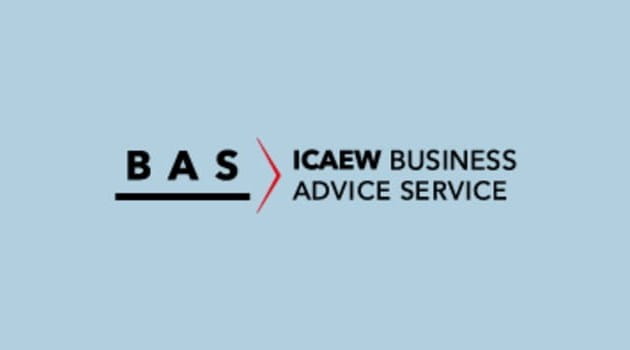The WEPs consist of a framework developed by the UN Global Compact and UN Women to help businesses promoting gender equity and women’s empowerment in the workplace, marketplace, and community.
The EBF represents the European banking sector, bringing together 32 national banking associations and giving voice to banks across Europe. Given its reach, the EBF’s adoption of the WEPs plays a crucial role in promoting a shift in how gender equality is perceived in finance and beyond. The EBF’s endorsement of the WEPs builds on the association’s previous commitments in the field, including signing up to the European Commission’s Digital4her initiative and endorsing the Principles for Responsible Banking.
EBF’s Chief Operations Officer, Niels-Peter van Doorn, and the Director of Financing Growth, Burçak Inel, are in the lead when it comes to promoting diversity, equity, and inclusion in the organisation. “The adoption of the WEPs is a signal of how important diversity and women's empowerment are for the EBF. These initiatives help banks to do a better job and meet the emerging needs of the economy and society,” Inel says. While she is primarily focusing on policy objectives, van Doorn is working on implementing strategies to achieve diversity, equity, and inclusion at the EBF. Both aspects also extend beyond the EBF, to the sector the EBF represents.
An equal playing field
According to Inel, inclusion “is about giving every professional a fair and equal chance to be employed. It means eliminating biases that could prevent people from being able to show their value due to their background and gender”.
“Not only banks, but every company should incorporate diversity in how they manage internal operations and serve their clients,” she adds. Organisations made up of individuals of different ethnicity, race, socio-economic status and gender can better understand and serve their clients’ needs.
“As a bank, your performance will benefit from having a diverse workforce as this will steer dialogue and discussion,” Inel says. However, inclusion is not only about representation, but it also requires organisations to treat people equally to ensure everyone contributes to the conversation. "To promote inclusive discussions at different levels – board, committees, teams – and design diverse products and services can have a positive impact on your bottom line,” she says.
Limited by societal factors
Unfortunately, this may not always be simple due to underlying societal factors that may perpetuate limitations. But the EBF Director of Financing Growth stresses that “irrespective of your candidate pool, you should have in place mechanisms to ensure that you are as open as possible, and everyone is trained and advanced in an equal way”.
Within this context, the seven WEPs are a strong resource for the EBF, and their importance was immediately clear to the EBF CEO, Wim Mijs. Inel says: “After having signed the Principle for Responsible Banking that same year (2019), adopting the WEPs was a natural next step. Our CEO is a strong believer in gender equality and has supported the efforts of European Commissioner Mariya Gabriel in the digital field.”
Many European banks have also signed on for WEPs. When it comes to financial institutions, the key challenge is making sure that these commitments have a lasting impact by operationalising them in all parts of their business.
About more than just banking
The topic of women empowerment goes beyond the banking industry. Changes need to be made throughout the business landscape. While it is important to support women in their career paths, fight glass ceilings, and promote positive role models, banks and companies can do more to better serve their women clients.
Across the financial services sector, there is room for improving retail products and services as well as how they are delivered. To do so, generalising assumptions about clients as one homogenous group should be set aside in favour of a more client-centric perspective and a holistic approach to delivery. Beyond this, the focus should be on what else can be done to capture those clients, taking into account the risk profiles and overall strategies of banks.
For example, do financial services adequately consider women’s longevity, the potential for career interruptions, and the lower levels of collateral available to them to support mortgage and loans? What can the financial sector do differently to accommodate these specific needs? And let’s not forget about the issue of financial health and financial literacy. Are men and women equally provided with the means to address these two aspects of their financial life? Is there work to be done there, too?
Inel points out that by making sure that women can access top-tier jobs within the banking sector, banks will be more agile in serving their women clients as they will better understand their specific needs.
Paving the way for women empowerment
So how does the EBF enable banks to become better employers and better providers of financial services? It started by exploring how women empowerment principles are upheld within the association itself. “We wanted to make sure to be better employers for women,” Inel says. “We started by looking at how many women we have at different levels and by going through the procedures and policies in place at EBF. If an adequate policy was not there or was not good enough, we explored new ways to encourage women to apply, maintain their roles, and be trained and promoted. Last, but not least, we also examined our organisational culture.” The starting results were already very good and paved the way for more progress.
As a trade association, the EBF engages with policymakers, industry peers and non-governmental organizations. “Apart from events and publications, we organise working groups and committees to bring together banking experts,” she says. “We have to make sure that our internal groups are diverse and inclusive, and that the chairpersons for these groups are both female and male representatives. The same is true for external events. We keep track of the number of women in our internal groups and we collect data on our performance in terms of gender balance during external events.”
The Women’s Empowerment Principles framework has helped the EBF to support women in finance, provide guidance to banks in designing diverse products and services, and best fulfil its mission of representing the European banking industry.
Insights Special: Access to finance
ICAEW Insights examines the finance options and support available to businesses, as well as the challenges they face in obtaining it.



